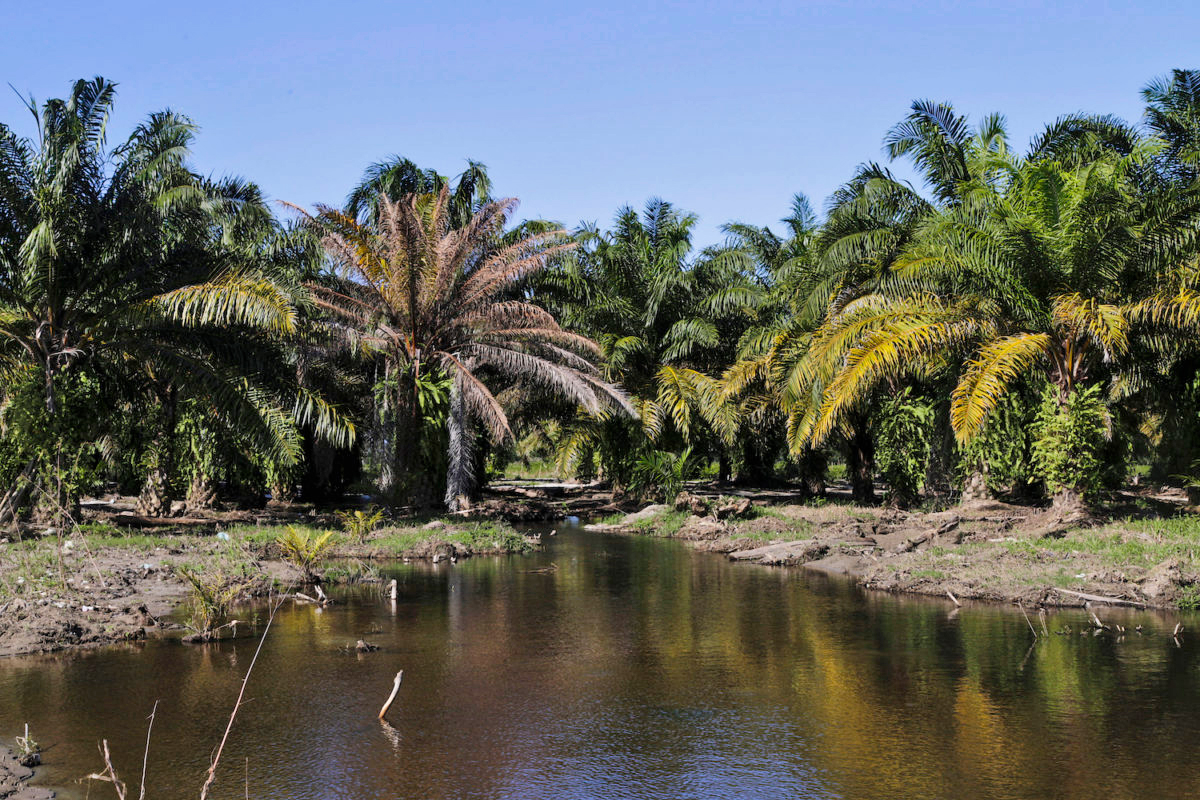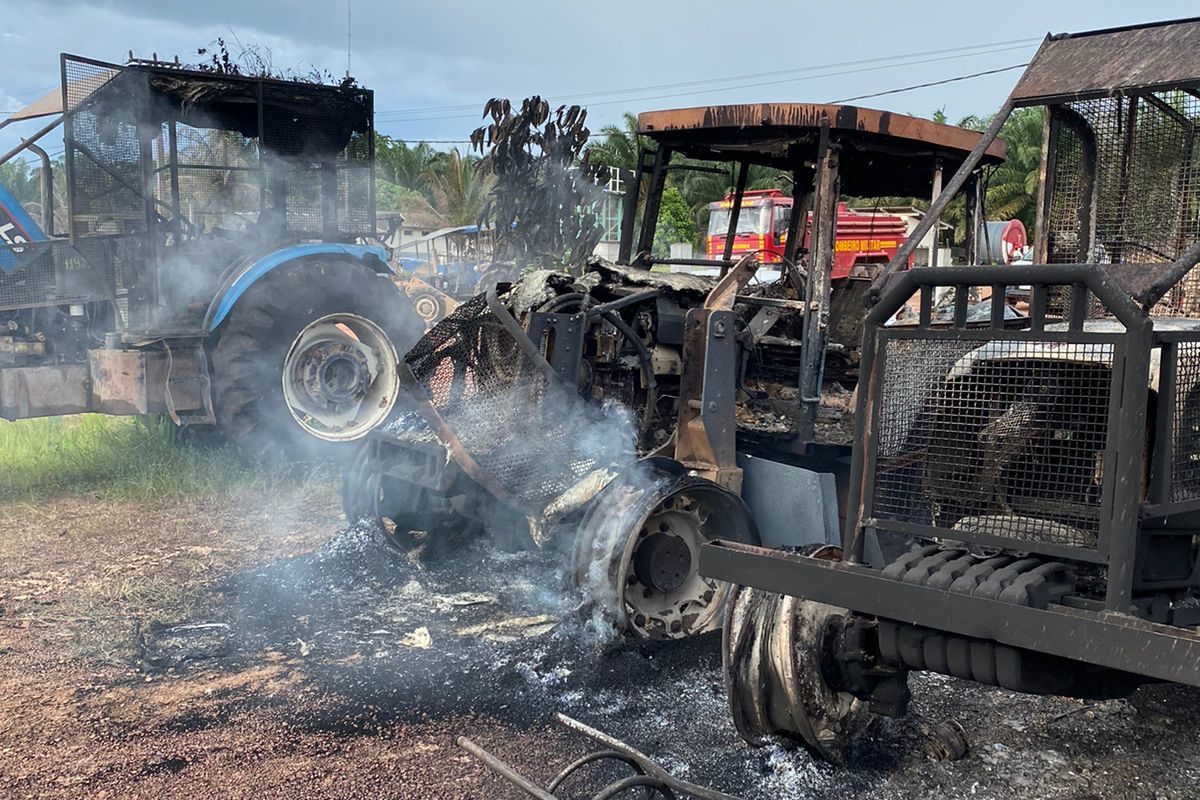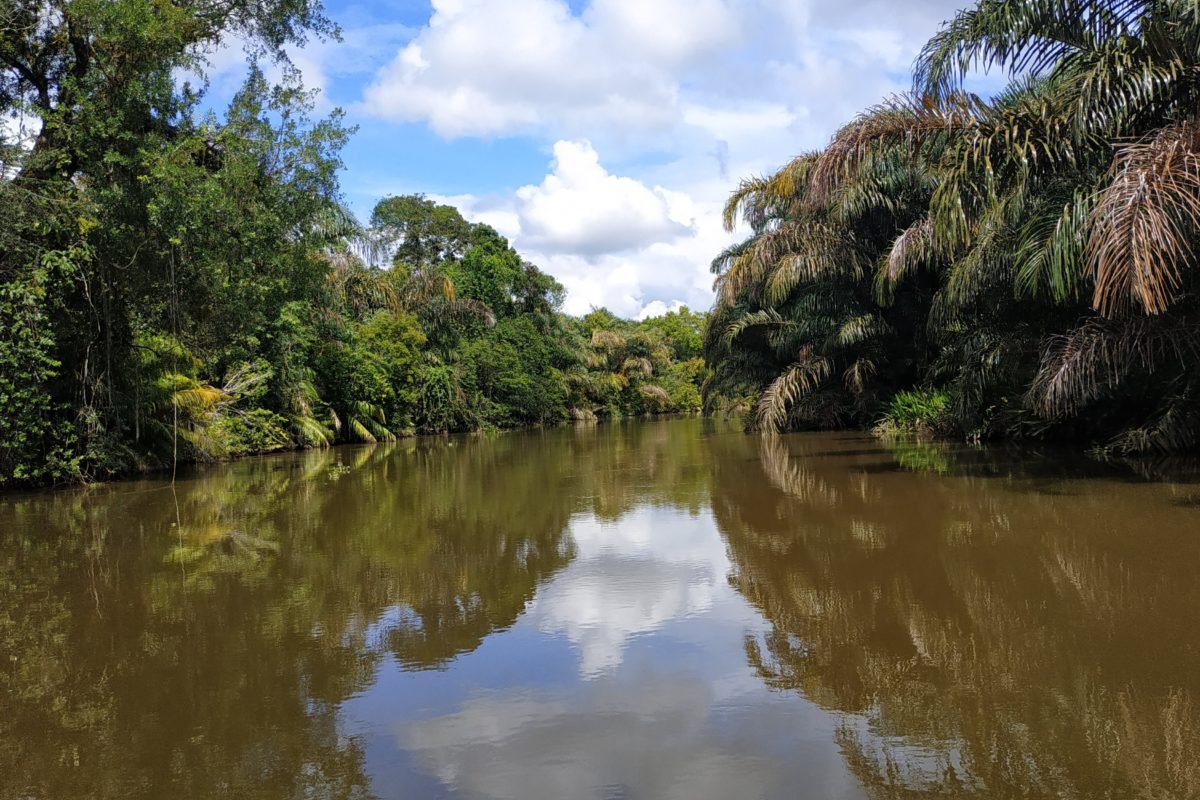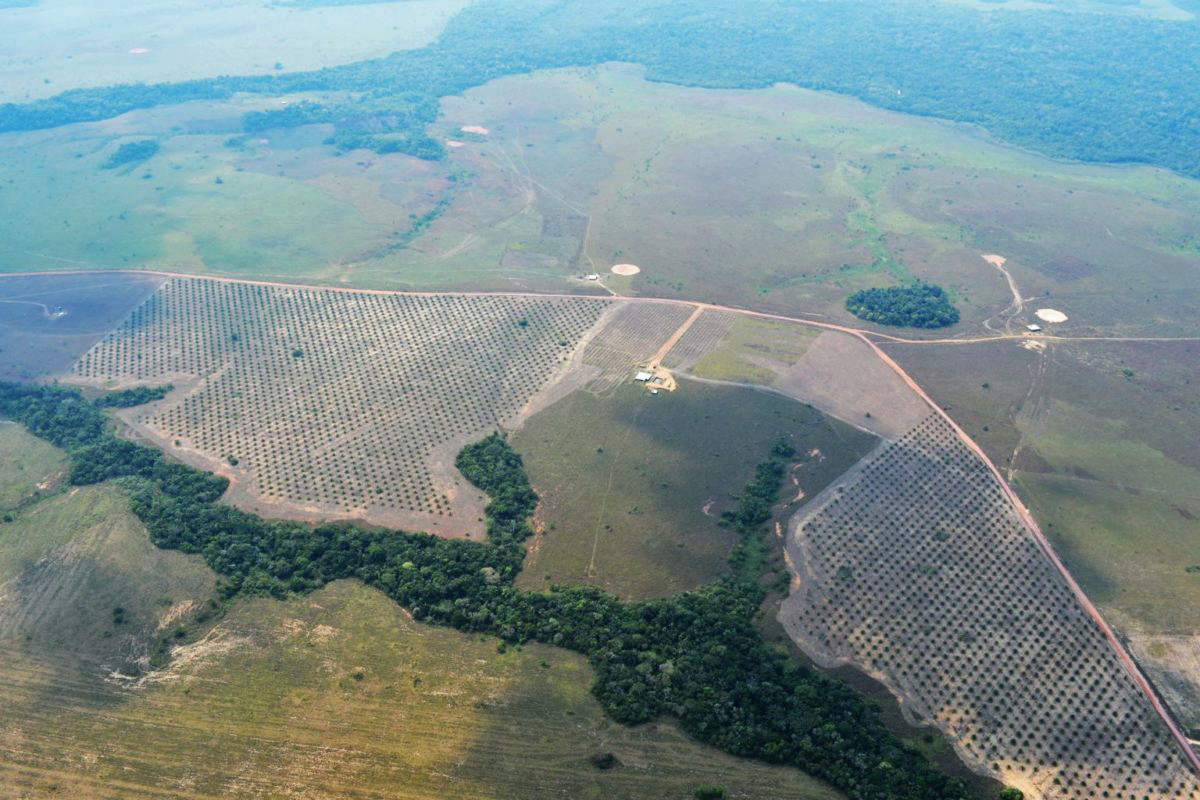- The journalistic partnership behind a 2021 database gathering information on the penalties for environmental violations given to palm oil producers in Colombia, Ecuador, Guatemala, and Honduras has added two more countries: Costa Rica and Brazil
- In these six Latin American nations, between 2010 and 2021, at least 298 cases were opened against 170 companies and individuals involved in the palm oil industry, according to the details offered by authorities in response to requests from the journalists working on the database.
- The handing over of incomplete documents and lack of information are, once again, a common feature of how authorities across the region respond to journalists’ requests. In 181 cases, it was impossible to understand the stage of the penalty proceedings, while in 42 cases there was no concrete information on whether a sanction or fine had been applied. In 47 instances, the exact nature of the environmental violation committed by the target of the proceedings was not specified.
Palm oil production is leaving a deep mark on the rivers and forests of Latin America. Between 2010 and 2021, at least 298 cases were opened against 170 palm oil companies and producers in just six countries across the region. The violation of environmental regulations, deforestation, diverting watercourses and water hoarding, among other crimes, were the leading reasons for pursuing punitive measures against the companies and individuals involved.
This is just one of the findings of a recent investigation led by the Following the impacts of palm oil alliance (in its original Spanish name, Tras las huellas de la palma alliance) which, since early 2021, has investigated and built a database focusing on environmental authorities’ controls of palm oil companies, producers and processors in Guatemala, Honduras, Ecuador and Colombia, Costa Rica and Brazil.
In November last year, the investigative team published the first results of their investigation. At that point, 231 cases had been filed between 2010 and 2020 in four countries: Guatemala, Honduras, Ecuador, and Colombia. The 2022 report had updated the database to include figures from 2021, as well as information from Brazil and Costa Rica.
All of the information included in the investigation so far, which covers a 12-year period, was obtained via answers provided by the environmental authorities of the different countries after more than 200 information requests were filed by members of the media alliance convened by Mongabay Latam, and made out of Agencia Ocote (Guatemala), Contracorriente (Honduras), Línea 84, La Barra Espaciadora (Ecuador) and France 24 en español.

A profitable business
In this second stage of the investigation, reporters were once again confronted by a worrying level of secrecy on the part of the authorities and encountered difficulties in accessing official data. Furthermore, when the authorities did comply with the reporters’ requests, the information they provided was often incomplete. Once all the new data collected in the last year had been verified, other 67 cases of ongoing complaints and investigations against companies and individuals in the palm oil industry were added to the 231 existing cases. Of these 67 new cases, 44 were from Brazil, eight from Costa Rica, 12 from Guatemala, two from Honduras, and one from Ecuador. No new cases were reported in Colombia.
Although not a single new investigation was opened by the Colombian authorities in 2021, the country continues to have the highest number of cases (176). Colombia is Latin America’s largest palm oil producer, and the industry is being repeatedly targeted by the country’s environmental authorities for flouting environmental regulations and clearing forested areas.
The impact of palm oil production in Latin America could even worsen in the coming years, as the industry is forecast to grow.
Palm oil is one of the 12 commodities monitored by the United States Department of Agriculture (USDA). The USDA’s own projections predict that global production of palm oil will reach 79,160,000 tonnes by 2022-2023. This would represent a 4.2% increase compared with 2021-2022, when global production levels stood at 75,950,000 tonnes.

The palm oil industry is a multimillion-dollar business. A recent market study showed that global sales of palm oil are set to reach $33 billion for 2022.
The global palm oil market is dominated by Indonesia, which is responsible for 59% of global output. However, six Latin American countries are listed among the top 20 producers: Colombia in fourth place, Guatemala in sixth, and Honduras in ninth. Brazil rounds off the top ten, while Ecuador and Costa Rica stand in eleventh and sixteenth place, respectively.
All of these countries share histories of socio-environmental conflicts fueled by palm oil monoculture. Between 2016 and September 2022, Mongabay Latam has published 79 stories on issues relating to palm oil in the region.
How tightly is the palm oil industry regulated?
Between 2021 and 2022, the Alliance’s reporters made 191 requests for information to governmental authorities in the six Latin American countries in question; 70 in 2021 and 121 in 2022. Many of the responses stated that they had not organized the information or that, in 12 years, they had not received a single case linked to environmental infringements.
In the case of Brazil, some environmental authorities responded by claiming that providing such information was not within their remit, or that they did not have either the time or the staff available to organize the data. In order to obtain information about the country 44 proceedings, it was necessary to conduct an in-depth search across information systems belonging to state- and federal-level environmental authorities, since, unlike other countries, Brazil provides public access to this data, even if it has not been organized or standardized.

The new data from Brazil and Costa Rica, together with updates from Colombia, Ecuador, Guatemala and Honduras, mean that 67 new cases have been added to the database, which was published last year and brings together information on penalties, complaints, and investigations. Today it features information regarding 298 penalty proceedings, the overwhelming majority of which – 176 – are from Colombia. Guatemala follows with 60 cases, Brazil with 44, Costa Rica with eight, and Ecuador and Honduras with seven and three, respectively.
The database has revealed that 170 palm oil producers – both companies and individuals – are targeted by the 298 cases of penalty proceedings, with some of these companies or individuals having to answer for more than one case. On a country-by-country basis, 122 producers operate in Colombia, 25 in Guatemala, eight in Brazil, seven in Costa Rica, four in Ecuador and three in Honduras.
The most common offenses committed by these palm oil producers are related to violating environmental regulations (141 of the cases), deforestation (61 cases), and the diversion or taking control of water supplies (51 cases).
Lack of transparency is common across the region
In this latest stage of Mongabay Latam’s joint investigation, the same patterns as last year repeated themselves: a lack of transparency and difficulty in accessing information. Of the 298 cases that were documented across the six countries, 251 of them involved some type of environmental impact, however it was not possible to get in depth information on each case, although these requests were made to official authorities.
In 181 cases, it was impossible to determine the stage of penalty proceedings (categorized under ‘indeterminate status’), and in 42 cases there was no information on whether investigative proceedings had been initiated or not.
In just 80 of the nearly 300 cases could it be confirmed that the palm oil producer had been penalised, had been forced to pay some form of environmental compensation, had made some type of improvements to their production process, or had, in the end, been exonerated of the claims against it.
In many cases, the authorities did not provide even basic information such as the year in which the facts in question took place (102 instances), or the name of the company or individual under investigation (17 instances).
The lack of this information, despite the fact that it had been formally requested, is worrying, as it reflects the weakness of the authorities in controlling and monitoring the environmental practices of the palm oil industry.

Serious cases of environmental damage went unreported
Journalists working on the investigation requested information from environmental and regulatory bodies in Colombia, Honduras and Costa Rica regarding every case of environmental penalty proceedings opened against companies, producers and processors from the palm oil industry between 2010 and 2021. The team working on the report found that in these three countries there had been cases of environmental damage that received no mention in the information shared by national authorities with the reporters, despite the seriousness of the damage and despite testimonies that the incidents were reported.
The case of Honduras is unique. In 2021, when the requests for information were made regarding proceedings begun between 2010 and 2020 against companies or individuals for environmental violations, the only details available were of a single case against an individual. This was the case of a man who had been accused of clearing forested land to plant palm trees in the Jeanette Kawas National Park, in the department of Atlántida. In 2022, however, when new requests were made to update the database up to 2021, the authorities provided information on two new cases, from 2017 and 2020, neither of which had been mentioned or referenced in response to the initial request for information.
The investigation also uncovered a serious situation in the Honduran municipality of Omoa, in the department of Cortés, relating to the proposed creation of a protected area. Again, Honduran authorities made no mention of this case.
The case relates to what happened to the proposal to create a new national park in northern Honduras, the Cuyamel-Omoa National Park (PANACO). A proposal to protect the area – which has been classed as a Ramsar Site (a wetland of international importance) since 2013 – was put forward by Honduras’ Forest Conservation Institute (ICF) 11 years ago. In the meantime, however, the advance of palm plantations has destroyed a large part of the wetland ecosystem and the file containing the proposal for creating the park was lost in a fire at the ICF offices. The Honduran Congress never officially signed off the document and did not provide a new copy.
What followed was the creation of the Cuyamel-Omoa Subsystem of Protected Areas (SAPCO), which was divided into the Omoa National Park and the Cuyamel Wildlife Refuge. The areas of the region that have been taken over by palm oil and king grass plantations were left out of the core and buffer zones of the protected areas. Although many local organizations and inhabitants had filed complaints about events in the area, the Honduran authorities did not provide any information on the case in question, making it difficult to understand whether they were trying to cover it up, or whether they simply never acted upon the complaints and didn’t open an investigation.

In Costa Rica, palm oil plantations have taken over part of the Térraba Sierpe National Wetland, a Ramsar Site since 1995 and one of the country’s biggest and most important wetlands. There are, however, no records in the Ministry of Environment and Energy (Minae) or in the Public Ministry of Costa Rica about sanctions that palm oil companies, cooperatives, or producers have received for occupying part of the protected area or for discharging fertilizers into the ecosystem’s waterways. These two problems have been detected and reported on in several technical studies by Costa Rican institutions.
Ronny Romero, an environmental public prosecutor, suggested that “given that the [palm oil] crops are so widespread, perhaps towards where the palms were adjacent to forests or wetlands [referring to the Humedal Nacional Térraba Sierpe], the agricultural land has expanded, [this area] has been filled in [with more palm plantations]”. Romero insisted that, following the inquiries made by reporters working on the Mongabay Latam-led investigation, work will be done to monitor the situation. “It is a worthwhile concern and I will take it on board and take it into account when I hold meetings with leaders who are engaged in making this type of [environmental impact] analysis and who will be able to give a clearer answer [on the matter],” Romero added.

In the case of Colombia, although it is the country with the highest number of penalty proceedings opened between 2010 and 2021, the evidence compiled in this report would appear to suggest that environmental authorities are not investigating instances of illegal palm plantations which are beginning to encroach upon the Amazon rainforest.
FEDEPALMA, Colombia’s biggest association of palm oil producers – has denounced cases of planting illegal palm that has been linked to deforestation, clarifying in the process that those responsible for such acts are not FEDEPALMA associates. In 2018, for example, the then president of the association, Jens Mesa Dishington, warned that evidence had been found of palm producers changing land use in the departments of Meta and Guaviare, particularly within natural reserves, forest reserves and on Indigenous land. Although Dishington pointed out that complaints had been made, the information provided by environmental authorities in response to reporters’ requests did not contain any information on investigations being opened in Guaviare during the last 12 years following these complaints.

Fines that barely leave a mark
In Ecuador, Guatemala and Brazil, the reporting team spotted a pattern: companies that had been investigated numerous times for violating environmental regulations continued to operate, even without having paid any fines that they had received.
In Guatemala, Naturaceites, the palm oil producer that sells the popular Capullo palm oil product, has been mentioned by the Guatemalan Ministry of Environment and Natural Resources (MARN) in nine separate files. The company is accused of causing the death of hundreds of fish by releasing waste produced by its crops into waterways. It has also been flagged for engaging in new projects without having properly carried out environmental impact assessments. Furthermore, the fines imposed for such violations have tended to be lower than the financial costs and time it would take to carry out the studies.
In 2021, the company was mired in a case where homes belonging to a community settled on its land were set on fire, something that was never investigated by public prosecutors.

One of the problems, according to experts, is that in Guatemala’s Penal Code, environmental pollution is only punishable by a penalty of up to 10,000 quetzales (roughly $1,300). Juan Manuel Cruz environmental lawyer and former MARN employee with a master’s degree in Environmental Management, explained that such fines are “extremely low”, although in his view, more than increasing the financial penalties for such actions, it is more important to implement mechanisms that would allow for measuring the size of the damage and for providing solutions to revert it.
In the case of Brazil, the investigation managed to document 44 cases, 21 of which (48%) were related to just two companies: Brasil Bio Fuels (BBF) and Biopalma da Amazônia, which was bought by BBF in 2020.
Of the total number of sanctions applied between May 2011 and November 2021, only 20 revealed the exact figure of the fines, which totalled 1,370,000 reais ($261,000). Of these, only three are recorded as having been paid. As for the others, there is not even information available on the nature of the environmental crimes committed, which happened mainly in the northern state of Pará.
Biopalma da Amazônia (bought by BBF) leads the ranking of the most heavily-fined companies after it received a 1,090,000 reais ($202,000) fine in May 2014 for destroying 217 hectares of native vegetation in the municipality of Domingos do Capim, in the state of Pará, while also lacking the proper license from the environmental authority. The fine was not paid, according to a database belonging to the Brazilian Institute of the Environment and Renewable Natural Resources (IBAMA).

BBF claims that the fine was applied before it acquired Biopalma da Amazônia in 2020 and that, “since then, BBF has consistently acted to clarify and resolve this process”. The company stated that although the notification was registered on May 28, 2014, the process was only initiated on November 8, 2018. BBF said that at that time, Biopalma da Amazônia filed an administrative defense challenging the fine, with a decision pending until this day.
Despite the fact that BBF is responsible for almost half of the environmental penalty proceedings identified in the investigation, with fines – totalling $514,172 – applied in eight of those cases, the company’s palm oil projects remain active.
In Ecuador, a court ruling against the Palmeras de los Andes and Palmar de los Esteros companies has been recognized as a milestone, but the investigation has found that, five years after the ruling was issued, the accompanying reparation measures that were required have yet to be enacted.

This case was one of seven that the Ecuadorian authorities handed over to be included in this report’s database. Information on the case highlighted that the Court of Justice of Esmeraldas concluded that the palm oil companies had caused serious environmental damage to the land belonging to the La Chiquita and Guadualito communities, and also established 17 reparation and compensation measures, 13 of which would be assumed by the State, and four by the two companies involved.
This ruling has remained in name only, to the point that it is not even known if all those involved have been notified of their responsibilities or if they have repaired the damages caused. This case reflects, once again, how the state has been unable to determine with certainty if there is pollution caused by palm oil plantations in the country, and how it has failed to guarantee that production is carried out in compliance with environmental standards.
Banner image: Illustration by Kipu Visual.
This story was first published here on our Latam site on April 19, 2022.
